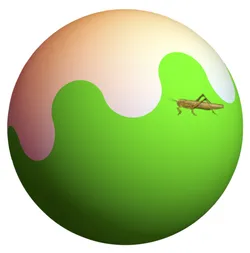Applied Computing News
Dr Sathyawageeswar Subramanian joins the department as a Research Fellow
Dr Sathyawageeswar Subramanian has joined the department to work as a Research Fellow on the "Foundations of classical and quantum verifiable computing" project, which is led by Dr Tom Gur.
Sathya completed his PhD in quantum computing at the University of Cambridge under the supervision of Prof. Richard Jozsa. His primary interests are quantum algorithms and computational complexity theory.
Welcome to Our New Students!
We congratulate all A-level students on their recent achievements. The quality of our intake in recent years has been outstanding and we are delighted to report that we will be welcoming another exceptional cohort of first year students. We look forward to getting to know you all in the coming term, and hope you will enjoy taking your next steps in your development as Computer Scientists.
Due to this year's special circumstances, this cohort will be by far the largest in the history of the department. While there will be challenges for students and staff alike, we will work hard, together with our students, to ensure that everybody can fully realize their considerable potential. We are excited and are looking forward to meeting this new talented group of students
Grasshopper jumping on a sphere gives new quantum insights
 Dr Dmitry Chistikov and Professor Mike Paterson, together with physicists Olga Goulko (Boise State University) and Adrian Kent (Cambridge), have published an interdisciplinary paper Globe-hopping, solving a probabilistic puzzle on the sphere that has applications to quantum information theory.
Dr Dmitry Chistikov and Professor Mike Paterson, together with physicists Olga Goulko (Boise State University) and Adrian Kent (Cambridge), have published an interdisciplinary paper Globe-hopping, solving a probabilistic puzzle on the sphere that has applications to quantum information theory.
Suppose a lawn must cover exactly half the area of a sphere. A grasshopper starts from a random position on the lawn and jumps a fixed distance in a random direction. What shape of lawn maximizes the chance that the grasshopper lands back on the lawn? A natural guess would be that a hemispherical lawn is best. It turns out, however, that this is nearly never the case — there are only a few exceptional jump sizes.
This work involving spherical geometry, probability theory, basic number theory, and theoretical physics appears in the Proceedings of the Royal Society A and shows, apart from concern for the well-being of grasshoppers, that there are previously unknown types of Bell inequalities. The Bell inequality, devised by physicist John Stewart Bell in 1964, demonstrated that no combination of classical theories with Einstein's special relativity is able to explain the predictions (and later actual experimental observations) of quantum theory.
A University press release can be found here.
